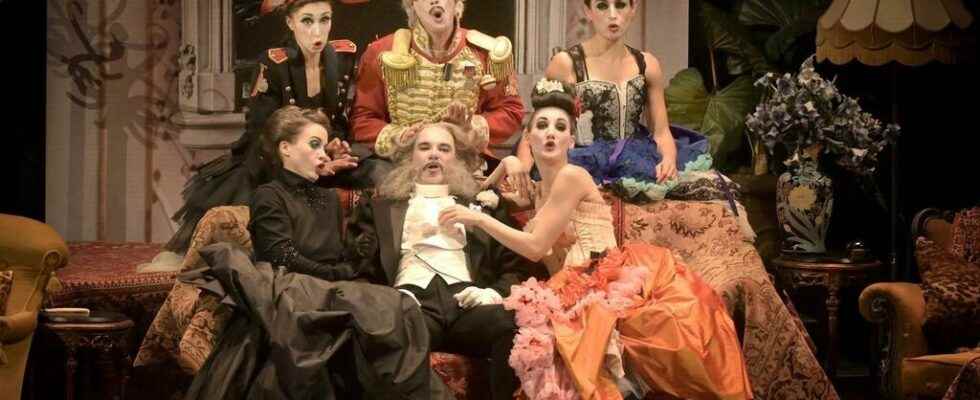“La Vie parisienne” by Jacques Offenbach, the most popular of French opera-bouffe, is presented at the Théâtre des Champs-Élysées in Paris in its original version, complete and uncensored, as its author imagined it in 1866. The flagship work of the king of the operetta is dressed by Christian Lacroix who signs his first staging.
We thought we knew everything about Parisian life of Offenbach until a scientific team from the Center for French Romantic Music came across hundreds of pages of manuscripts in the archives of the Bibliothèque Nationale de France.
Alexandre Dratwicki, artistic director of Palazzetto Bru Zane, says:
It turns out that “La Vie parisienne” had a difficult genesis. We found boxes that contained all the pieces cut during rehearsals because the singers of the creation could not sing what Offenbach had dreamed of. There were even little drawings because the musicians when they get bored at the rehearsal, they draw caricatures, little rebus, crosswords and we felt behind each score an impatience and then also an incapacity because “La Vie parisienne” is not written for an opera theater, but for the Théâtre du Palais-Royal where we did spoken theater. And a few weeks before the premiere, Offenbach and his librettist Halévy have decided to change everything. And it smacks of urgency because the last two acts of “La Vie parisienne” are still badly paved in these ending acts.
Unpublished passages
Two years of investigation in unknown territory and Parisian life finds all its colors, two new acts, a trio of snoring and about fifteen other unpublished numbers, partly victim of the censorship of 1866.
For Alexandre Dratwicki, “ there is a diplomatic trio which is sensational because it mocks the political and military diplomacy which is topical in all eras of humanity. You also have a very developed coachman’s quartet, you know those moments of madness at Offenbach with people of good society: a baron, a Breton dowager in an incredible situation of Jean the coachman who is not at all Jean and not at all a coachman. “
Ode to Parisian Life
Fourteen solo singers, eight acrobatic dancers, 170 extravagant costumes to restore all its splendor to this mirror of Parisian society of the Second Empire – and a couturier who signs sets, outfits and his first production: Christian Lacroix.
” The bridge between Offenbach, that is to say 1866, the year of the great universal exhibition which brought all of Europe to Paris, and the Paris of today, is a Paris under construction. So, there is a part of the decor which is Eiffel and Offenbach – from childhood, I have always been carried away by this zany, it’s very funny, a bit like the circus », Explains the great couturier.
Between scaffolding and clowning, Chinese shadows and men in garter belts, Christian Lacroix sings an ode to Parisian Life as fanciful and jubilant as the one dreamed of by Offenbach. “ This Paris of gaiety, enthusiasm, joy and also sensitivity, it is he who invented it. I believe he never existed. It’s his Parisian life », He concludes.
